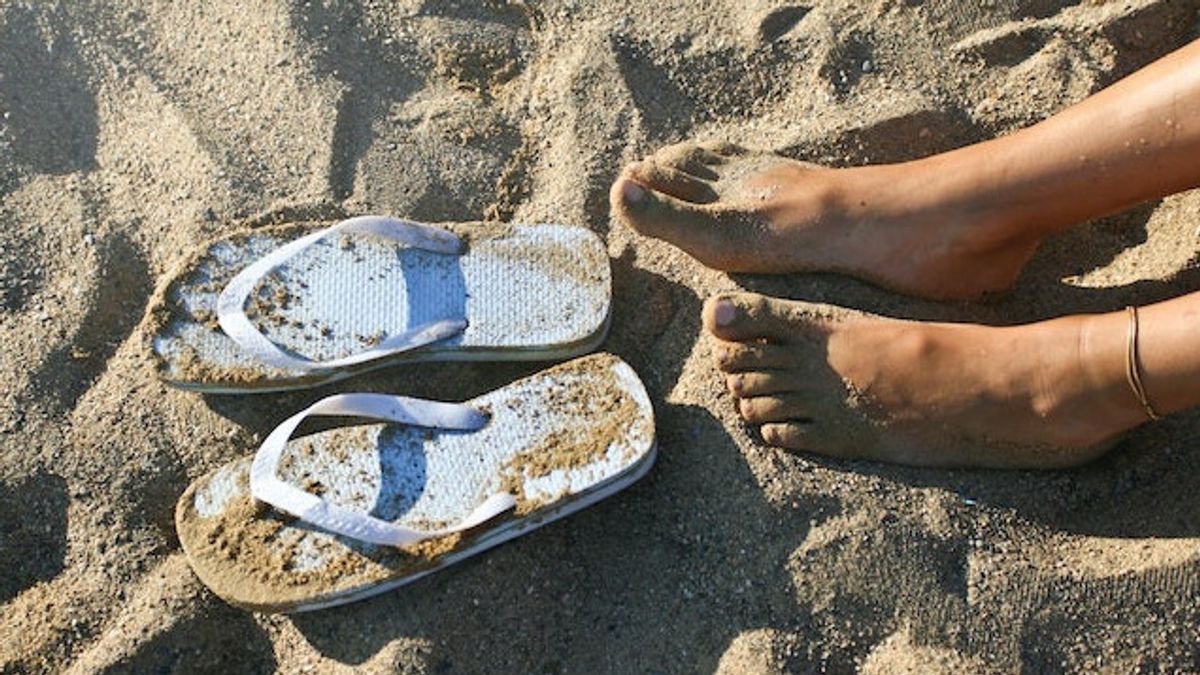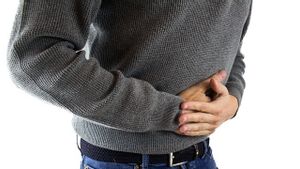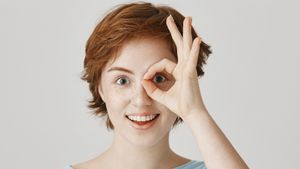JAKARTA - Wearing flip-flops is very comfortable. Especially if it's hot day, flip-flops provide better air space for the feet than shoes. But can the use of flip-flops have bad consequences for the legs? And can the use of it every day worsen the condition?
Alex Kor, DPM, a leg disease expert at Witham Health Services and assistant clinical professor at the Marian University College of Osteopathic Medicine, reported Livestrong, Monday, August 7, explaining how flip-flops affect leg health.
Dr. Kor said that the use of flip-flops every day can trigger or aggravate the aches of the heel. This is because flip-flops have a thin design. Also, most sandals are not equipped with a cushion to support the heel, thereby increasing the risk of a heel injury. Without proper support, your weight load will fall into the heel while walking.
The use of flip-flops occasionally will not cause straight fingers to bend.
"But wearing flip-flops regularly over the years can ultimately lead to the formation of a forwardoe," said Dr. Kor.
Hammertoe is a condition when the middle joint of the leg becomes warped, causing shape and pain disorders. Other hazardoe symptoms including the following flip-flops, in particular, can contribute to causing hazardoes because the toe must "cry" the sandals to keep them attached. This can result in permanent contractors.
If you have problems with arches, such as flat feet or arch pain, often wearing flip-flops will likely worsen them.
"The selection of your flip-flops can cause the anatomy of your legs to worsen over the years," says Dr. Kor.
Once again, the problem lies in the structure of flip-flops which are often thin, especially in the middle leg area.
"Due to the lack of support on sandals, it can cause the development of flat feet and contribute or cause curvature pain," said Dr. Kor.
اقرأ أيضا:
When wearing flip-flops, your leg has the potential to be exposed to a number of pathogens such as fungi.
"The flip-flops can be a nest of leg mold," said Dr. Kor.
Because sandals offer little protection from microbes that may be left on the floor. Feet are more likely to come into contact with things like mushrooms, which can infect the skin or nails.
In addition, there is a possibility that infections are obtained from dirty sandals.
"If it is not cleaned regularly, the sandals can store moisture and fungi," said Dr. Kor.
Even worse, sandals, which are mostly made of rubber or plastic, do not absorb moisture properly. So that fungi and bacteria will reproduce in this humid environment and thrive in your flip-flops.
You must have experienced leg abrasions due to the use of flip-flops.
"Tali, which usually exists between the thumb and index finger, can cause friction, which can develop into abrasions and seeps," said Dr. Kor.
And if the lephahan breaks, the open skin will be more susceptible to bacterial or fungal infections.
Another problem caused by flip-flops is that it causes metatarsalgia, because there is too much suppression in the metatarsal section.
Metatarsalgia occurs when it hurts in the soles of the front legs. In some cases, wearing a footwear like flip-flops that do not have a arch-convex sole can cause a stress fracture in the metatarsal bone.
The English, Chinese, Japanese, Arabic, and French versions are automatically generated by the AI. So there may still be inaccuracies in translating, please always see Indonesian as our main language. (system supported by DigitalSiber.id)


















